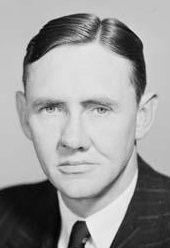25 October 1969 1972 → 82 seats 41 seats 16 18 | 10 January 1968 8 February 1967 66 seats 59 seats 49.80% 50.20% | |
 | ||
Federal elections were held in Australia on 25 October 1969. All 125 seats in the House of Representatives were up for election. The incumbent Liberal Party of Australia led by Prime Minister of Australia John Gorton with coalition partner the Country Party led by John McEwen (who had also served as Prime Minister for three weeks after Harold Holt's disappearance) defeated the Australian Labor Party led by Gough Whitlam. Even though Labor lost, the election was seen as a good result for the party as it made significant gains against the Coalition.
Contents
Seats changing hands
Issues
The 1969 election centred heavily on the two leaders, John Gorton and Gough Whitlam. Both were leading their respective parties in an election for the first time. Gorton had initially been very popular, and was publicly promoted as an "average Aussie bloke". This image was boosted by his record of wartime service and his craggy battered profile (the result of a wartime injury). However, he gradually gained a reputation for being erratic and unnecessarily confrontational. By the time of the 1969 election campaign his attempts to alter long-standing Liberal Party policies with regard to federal–state powers, and foreign affairs had alienated the more conservative sections of the Liberal Party, and various state Liberal leaders (Henry Bolte and Bob Askin in particular).
Whitlam, by contrast, had reformed the ALP and abandoned unpopular policies such as the once-dominant White Australia Policy, as well as the commitment to socialism still held by many members on the left of the party. He presented a sleek and modern image which was able to win over new voters to his cause. Whitlam had also managed to restore and heal the party's image as an electable alternative, something that had been impossible after the Labor Party split in 1955. Under his leadership, Whitlam had also attracted back many Catholic voters who had previously dumped Labor due to its infighting and factionalism. In addition, although the Coalition had won the biggest majority government in Australian history in 1966, it was increasingly seen as becoming tired and unfocused after 20 years in power. There were also growing concerns over Australia's involvement in the Vietnam War. The ALP thus went into the election with a good chance of increasing its small caucus.
Despite a Coalition campaign depicting Labor as a party dominated and controlled by union bosses, the result was very close. Labor became the biggest single party in the House, taking 59 seats—an 18-seat swing from 1966. It also won a bare majority of the two-party-preferred vote, winning 50.2 percent to the Coalition's 49.8 percent—a 7.1-point swing from 1966, the largest not to have resulted in a change of government. However, largely due to the Democratic Labor Party preferencing against Labor, Whitlam came up four seats short of toppling the Coalition. Had Labor been able to overcome DLP preferences in four Melbourne-area seats, Whitlam would have become Prime Minister. Nonetheless, Whitlam recovered much of what Labor had lost in its severe defeat three years earlier, and put the party within striking distance of winning government three years later.
